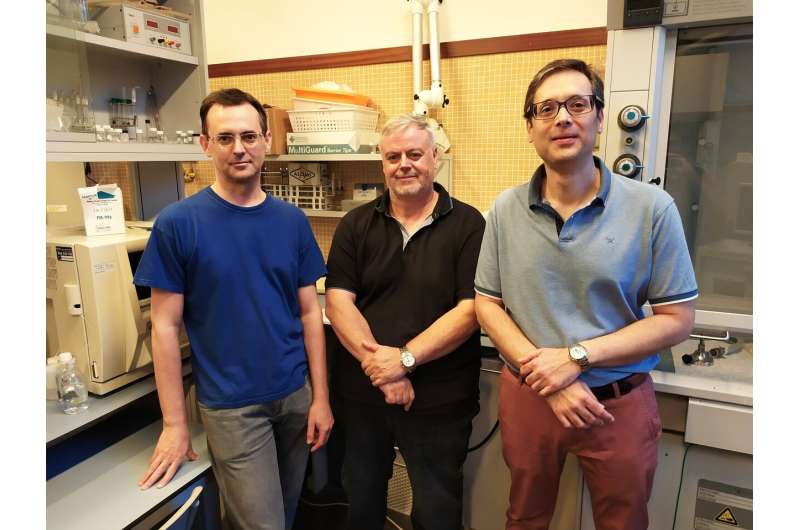Credit: Asociacion RUVID
Researchers of the Alcoi campus of Valencia's Polytechnic University (UPV) have developed new devices that store electric charge in textile materials, which could be used to, for example, charge our mobile phone. They are supercondensers placed on active carbon tissues that stand out due to their electric properties and high level of power. Their work has been published in the European Polymer Journal.
The study was focused on using textile materials as electrodes. In this case, the devices they have designed and tested make use of all the potential of active carbon, graphene and polyaniline, a polymer with high capabilities that is already broadly used in textile materials.
From their laboratories in the Alcoi campus, they evaluated different strategies that obtain electric charge accumulators from the electrochemical reduction of graphene oxide on the surface of the activated carbon (reduced graphene oxide—RGO) and the subsequent electrosynthesis of polyaniline (Pani).
"We have obtained new electric charge accumulators with specific power that are very competitive, and which could be used to charge the batteries of several devices. The supercondensers have been developed on textile materials, and therefore, the volume/mass and surface/mass ratios are very high. Hence their great potential. And as textile materials, these supercondensers could be small to supply energy to mobile devices, from our mobile phone, to a tablet or laptop, to name a few examples," says Francisco J. Cases, head of the GESEP.
These new devices can withstand 1,000 charging and discharging cycles with no problem. "This equates to three years of the daily charging and discharging of a mobile phone," says José Antonio Bonastre, also of the GESEP.
Other uses
As well as their use in "intelligent" textiles, the UPV researchers say that these new supercondensers have great potential as an alternative to lithium batteries or fuel cells. "The tests we have conducted in the laboratories prove that our devices have a specific power that is very competitive. In the case of fuel cells, they range from 2 to 200 W/Kg, and in the case of lithium batteries, from 100 to 600. Our active carbon, polyaniline and graphene supercondensers reach powers of 500 W/Kg," says José Antonio Bonastre.
They can also be used to treat waste water by way of electrolysis, and also in biomedical settings. "In the former case, we have used it for the decolouring of textile wastewater, with very promising preliminary results," says Francisco Cases.
The work of the GESEP now focuses on developing prototypes that are able to decontaminate greater volumes of industrial waste water, using these textile materials as electrodes in an electrochemical system.
More information: J. Fernández et al. Electrochemical study on an activated carbon cloth modified by cyclic voltammetry with polypyrrole/anthraquinone sulfonate and reduced graphene oxide as electrode for energy storage, European Polymer Journal (2018). DOI: 10.1016/j.eurpolymj.2018.04.018
Provided by Asociacion RUVID
























